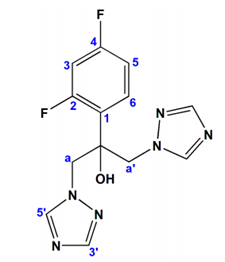Synthesis and characterization of mixed ligand complexes of Fluconazole drug and glycine with some transition metals: antifungal study
Keywords:
Mixed ligand Complexes, Fluconazole, Glycine, Antifungal Study, XRDAbstract
Mixed ligand complexes of fluconazole (FCZ), like the main ligand and glycine (Gly) as the secondary ligand, were synthesized and characterized using elemental analysis, spectroscopy, infrared and electronic spectra, magnetic susceptibility, and molar conductivity. The results showed that 1:1:1 [M:L1:L2] octahedral complexes were formed, with FCZ coordinating through its C=N group and glycine coordinating through its carboxylic oxygen and amino nitrogen. Molar conductivity indicated the complexes were not electrolytic in nature. The antifungal activity of FCZ, glycine, and their metal complexes with Cu, Ni, and Cd was tested against Aspergillus niger, Peni- cillium italicum, and Candida albicans. Cadmium complex [Cd(FCZ)(Gly (H2O)2Cl].2H2O showed significantly enhanced activity with outperforming the standard antifungal agent Nystatin against A. niger and P. italicum. These findings highlight the potential of such complexes as effective antifungal agents.
Downloads

Published
How to Cite
Issue
Section
Copyright (c) 2025 Yasmin Jamil, Majeda M. Al-Baseer, Basem Al-Akhali, Ahmed N. Alhakimi

This work is licensed under a Creative Commons Attribution-NonCommercial-NoDerivatives 4.0 International License.
